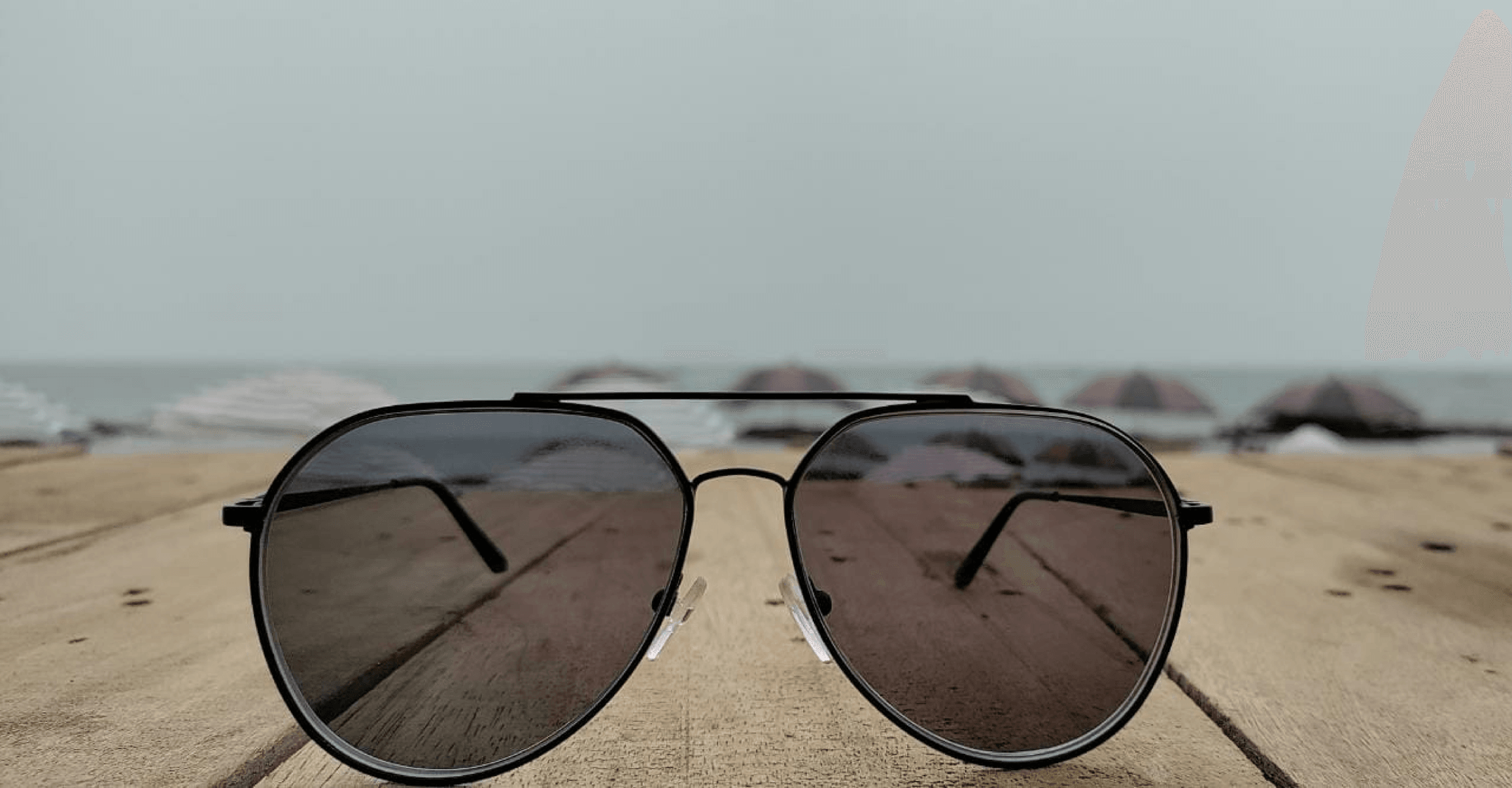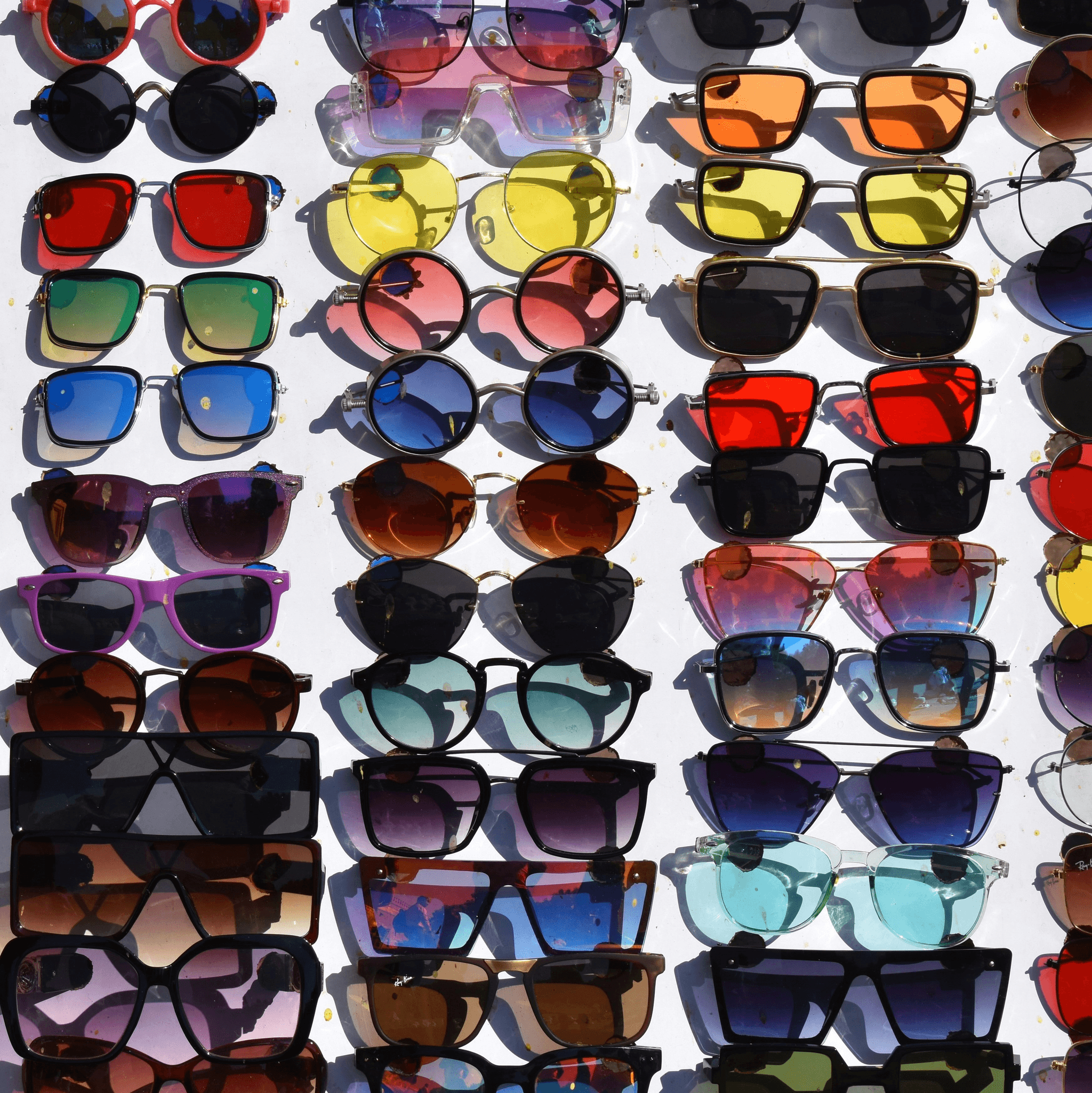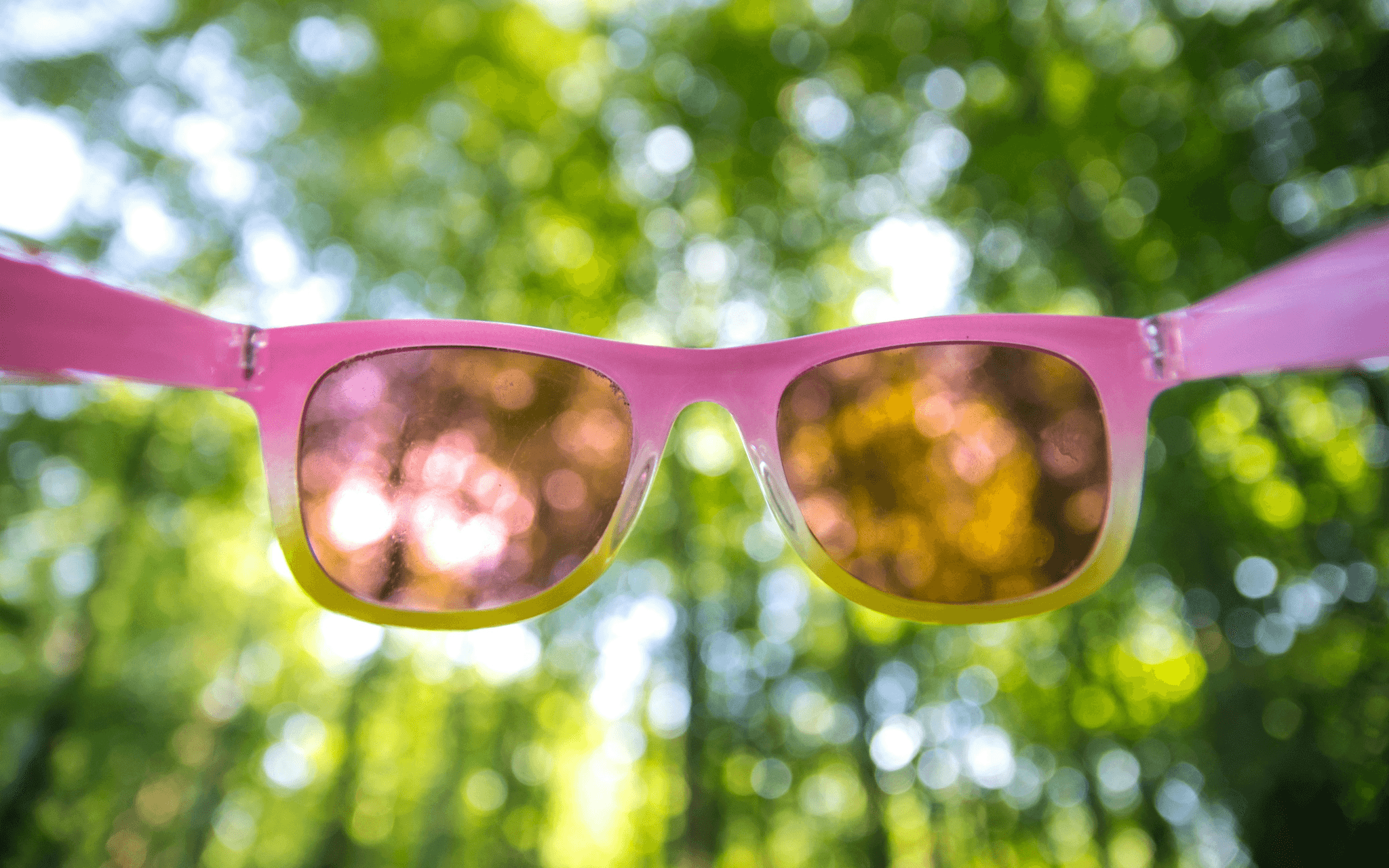Introduction

Tinted prescription glasses have become a popular choice for many individuals seeking both style and functionality in their eyewear. These glasses not only enhance visual comfort but also provide a unique flair that can reflect personal style. As we delve into the world of tinted prescription glasses, it's essential to understand their benefits, the various options available, and address common questions surrounding them.
Understanding Tinted Glasses
Tinted glasses are eyewear lenses that have been treated with a colored coating to reduce glare and enhance contrast. They come in various shades and intensities, catering to different needs and preferences. Whether you're looking for protection against harsh sunlight or simply want to make a fashion statement, understanding what tinted glasses can offer is crucial.
The Benefits of Tinted Prescription Glasses
The advantages of tinted prescription glasses extend beyond aesthetics; they can significantly improve visual comfort in bright environments. By reducing glare and enhancing contrast, these glasses can make outdoor activities more enjoyable and less straining on the eyes. Additionally, lightly tinted prescription glasses can help alleviate symptoms of light sensitivity for those who need it most.
Addressing Common Questions
As you explore your options for tinted prescription glasses, you may find yourself asking several key questions: Can prescription glasses be tinted? Are tinted glasses a good idea? What tint is best for prescription glasses? Moreover, understanding the potential disadvantages of tinted glasses—like impacts on night vision or color distortion—is just as important as knowing their benefits. In this guide, we will tackle these inquiries head-on while guiding you through everything you need to know about tinted prescription eyewear.
What Are Tinted Glasses?

Tinted glasses are not just a stylish accessory; they serve multiple purposes that enhance visual comfort and protection. These glasses come with colored coatings that can reduce glare, improve contrast, and shield the eyes from harmful UV rays. Whether you’re lounging on the beach or driving into the sunset, tinted prescription glasses can be a game-changer for your eyesight.
Definition and Purpose
At their core, tinted glasses are eyewear that has been treated with a color coating to alter the way light enters the lenses. The primary purpose of these glasses is to filter specific wavelengths of light, which can help reduce eye strain and improve clarity in bright conditions. Many people wonder, “Can prescription glasses be tinted?” The answer is yes! You can enjoy both vision correction and visual comfort simultaneously.
Popular Types of Tints
Grey tints are great for reducing overall brightness without distorting colors, while brown tints enhance contrast and depth perception—perfect for outdoor activities! Lightly tinted prescription glasses are also available for those who want subtle protection without compromising too much on visibility.
How Tints Affect Vision
The effect of tints on vision can vary significantly depending on their darkness and color. Darker tints may provide more protection from sunlight but could hinder visibility in low-light conditions—something to consider if you’re asking yourself, “Are tinted glasses a good idea?” Conversely, lighter tints offer minimal interference with color perception while still providing some relief from glare; this makes them ideal for indoor use or overcast days. Understanding how different tints affect vision will help you make informed choices about your eyewear options.
Can Prescription Glasses Be Tinted?

The question on many people's minds is, Can prescription glasses be tinted? The answer is a resounding yes! Tinted prescription glasses can enhance your visual experience, providing both comfort and style. However, before diving into the world of tints, it’s essential to understand the process and options available.
The Tinting Process
Tinting prescription glasses involves applying a colored film or dye to the lenses. This process can be done during lens production or as an aftermarket enhancement. Typically, the lenses are submerged in a dye bath or treated with a special coating that adheres to the surface, allowing you to achieve your desired tint level while maintaining your vision correction.
Options for Tinted Prescription Glasses
You can choose from solid tints, gradient tints, or photochromic lenses that adjust based on light exposure. Whether you're looking for lightly tinted prescription glasses for everyday use or darker shades for outdoor activities, there's an option that fits your lifestyle perfectly.
Factors to Consider Before Tinting
Before getting those tinted prescription glasses customized just for you, consider several factors that may influence your choice. Think about how often you'll wear them and in what environments; this will help determine whether you need lighter or darker tints. Additionally, keep in mind how much it costs to tint prescription glasses as this varies based on lens type and tint complexity—budget accordingly!
What Tint Is Best for Prescription Glasses?

Choosing the right tint for your prescription glasses can be a bit of a balancing act. You want to enhance your vision and comfort without compromising on style or functionality. The question What tint is best for prescription glasses? often leads to discussions about dark versus light tints, suitable options for various activities, and the advantages of lightly tinted prescription glasses.
Dark vs. Light Tints
Dark tints are excellent for outdoor activities, providing substantial protection against bright sunlight and glare. However, they can hinder visibility in low-light conditions, which raises concerns about night driving—definitely something to consider when asking yourself, Are tinted glasses a good idea?
On the other hand, lightly tinted prescription glasses offer a more versatile solution. They provide mild glare reduction while preserving color accuracy and clarity in various lighting conditions. This makes them ideal if you're frequently transitioning between indoor and outdoor environments or if you're simply looking for an everyday pair that won’t compromise your vision.
Best Tints for Different Activities
Different activities call for different tint options when it comes to tinted prescription glasses. For instance, if you’re an avid golfer or cyclist, gray or green tints may be beneficial as they reduce glare while maintaining true color perception on the course or road. On the flip side, yellow tints can enhance contrast during overcast days or in foggy conditions—perfect if you’re out hiking!
If you're into water sports like fishing or sailing, polarized lenses with a blue tint might be your best bet since they reduce surface glare from water reflections significantly. So when considering Can prescription glasses be tinted? remember that specific colors serve specific purposes and can enhance your overall experience depending on what you love doing.
Recommendations for Lightly Tinted Prescription Glasses
Lightly tinted prescription glasses are often an excellent choice for those seeking versatility without losing clarity in their vision. These types of lenses usually come with a subtle gradient that provides just enough shading while ensuring you don’t miss any details around you—ideal for daily wear! If you're concerned about how much it costs to tint prescription glasses lightly, many optical shops offer affordable options that won't break the bank.
For individuals who spend long hours working indoors but occasionally venture outside during sunny breaks, lightly tinted lenses help ease eye strain caused by fluorescent lighting without overwhelming brightness outdoors. In summary, if you're pondering What are the disadvantages of tinted glasses? remember that opting for lighter shades can mitigate some common issues like reduced night visibility while still offering protection from harsh light.
Are Tinted Glasses a Good Idea?

Advantages of Tinted Glasses
Tinted prescription glasses offer several advantages that can enhance your visual experience. First, they provide protection from harmful UV rays, which is especially important for those who spend significant time outdoors. Additionally, these glasses can reduce glare from bright lights or reflective surfaces, making activities like driving or fishing more comfortable and enjoyable.
Another major benefit is the aesthetic appeal; lightly tinted prescription glasses can elevate your style while serving a functional purpose. With various tint options available—from subtle shades to darker tints—you can customize your eyewear to suit both your vision needs and personal taste. Lastly, many users report reduced eye strain when wearing tinted lenses in bright environments, leading to improved overall comfort throughout the day.
Situations Where Tinted Glasses Shine
There are specific situations where tinted prescription glasses truly excel and shine like a diamond in the sun! For instance, outdoor enthusiasts—whether hikers or beachgoers—will find that sunglasses with the right tint enhance visibility while protecting their eyes from harsh sunlight. Similarly, individuals who work in environments with bright artificial lighting may benefit from tints designed to reduce glare and discomfort.
Sports enthusiasts also have much to gain; different tints can enhance contrast and depth perception during activities like skiing or cycling. In addition, those suffering from light sensitivity due to conditions such as migraines may find relief through appropriate tints tailored to their unique requirements. Ultimately, understanding when and where tinted glasses provide advantages will allow you to maximize their potential benefits.
Potential Risks to Consider
While there are numerous benefits associated with tinted prescription glasses, it’s essential to consider some potential risks before making a decision about whether they are a good idea for you. One notable drawback is that dark tints may impair night vision significantly; if you frequently drive after sunset or engage in nighttime activities, this could pose safety concerns.
Additionally, certain colors of tint may distort colors or affect depth perception under specific lighting conditions—something artists and designers should keep in mind when choosing what tint is best for prescription glasses for their needs. Finally, it’s worth noting that not all lenses react well to being tinted; thus it's crucial to ask yourself: Can prescription glasses be tinted? Consulting with an eye care professional will help you navigate these considerations effectively.
What Are the Disadvantages of Tinted Glasses?

While tinted prescription glasses can be a stylish and functional choice, they do come with some drawbacks that are important to consider. Understanding these disadvantages can help you make an informed decision about whether to invest in tinted options for your eyewear. Let's dive into what you need to know about the potential downsides of tinted glasses.
Impacts on Night Vision
Darker tints can reduce visibility in low-light conditions, making it difficult to see clearly when driving at night or navigating dimly lit environments. If you're considering whether Can prescription glasses be tinted? it's crucial to think about how often you'll be in situations where good night vision is essential.
Possible Color Distortion
Another disadvantage of tinted glasses is the potential for color distortion. Depending on the tint applied, colors may appear differently than they would through clear lenses, which can affect tasks that require color accuracy—like painting or selecting clothing. If you’re pondering What tint is best for prescription glasses? keep in mind that some tints might skew your perception of colors, leading to confusion or mistakes.
Limitations in Certain Lighting Conditions
Tinted prescription glasses may also present challenges in varying lighting conditions. For instance, wearing darker tints indoors can lead to eye strain and discomfort due to reduced light transmission, making activities like reading more taxing than necessary. Additionally, if you're frequently transitioning between bright outdoor environments and dim indoor settings, you might find yourself asking Are tinted glasses a good idea? as you struggle with adjusting your vision.
Tinted Prescription Glasses Price

Factors Influencing Cost
Several factors influence the price of tinted prescription glasses. First and foremost is the type of tint you choose; some tints are more expensive due to their advanced technology or special features. Additionally, whether you're opting for standard lenses or high-index lenses can also affect the overall cost—high-index lenses tend to be pricier but are thinner and lighter, making them a popular choice for those needing stronger prescriptions.
Another factor is where you purchase your tinted prescription glasses. Retailers may offer different pricing structures based on their brand reputation or service level; local opticians might charge differently than online retailers. Finally, any add-ons like scratch-resistant coatings or UV protection can also increase your total bill.
Average Price Range
On average, tinted prescription glasses can range anywhere from $100 to $500 or more depending on various factors discussed earlier. Basic tints on standard lenses might start at around $100-$150, while specialized tints with premium lens materials could push prices upwards of $300-$500. If you're considering lightly tinted prescription glasses for everyday wear versus darker shades for outdoor activities, expect these variations in pricing.
It's worth noting that while initial costs may seem steep for tinted glasses, investing in quality eyewear often pays off in terms of durability and comfort over time. Be sure to compare prices across different vendors before making your decision; sometimes local shops have promotions that online retailers do not.
How Much Does It Cost to Tint Prescription Glasses?
If you're specifically looking at how much it costs to tint prescription glasses after purchasing them without pre-existing tints, this will generally fall within a range of $30-$100 depending on where you go and the type of tint applied. Some optical shops may offer free tinting services if you buy your frames and lenses from them directly—so always ask!
In conclusion, when pondering whether “Are tinted glasses a good idea?” consider both functionality and financial investment; quality should never be sacrificed just for affordability alone if vision health is at stake.
Conclusion
In summary, tinted prescription glasses offer a blend of style and functionality that can enhance your visual experience. They come with various benefits, including protection from glare and UV rays, but it's essential to weigh these against potential drawbacks. By understanding the nuances of tinting, you can make an informed decision that suits your lifestyle.
Key Takeaways About Tinted Glasses
Tinted prescription glasses are not just a fashion statement; they serve practical purposes too. Understanding what tint is best for prescription glasses depends on your activities—whether you're driving, working outdoors, or simply enjoying a sunny day at the park. Remember to consider factors like how much it costs to tint prescription glasses and any disadvantages associated with specific tints before making your choice.
Making an Informed Choice
When considering whether Can prescription glasses be tinted? the answer is a resounding yes! However, selecting the right shade is crucial—darker tints may offer more sun protection but could hinder night vision. Weighing the advantages of tinted glasses against their disadvantages will help you determine if they fit into your daily routine.
Elevate Your Eyewear with Daposi
If you're looking to add flair while benefiting from functional features in eyewear, lightly tinted prescription glasses might be just what you need! Daposi offers stylish options that cater to both aesthetics and practicality without compromising on quality or comfort. So why not elevate your eyewear game today?
